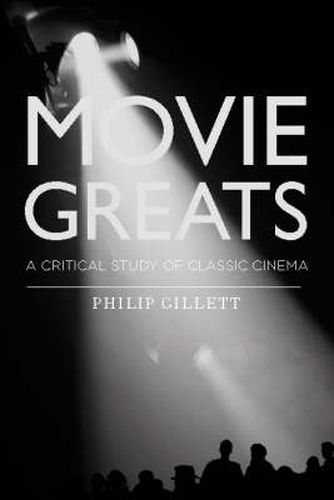Readings Newsletter
Become a Readings Member to make your shopping experience even easier.
Sign in or sign up for free!
You’re not far away from qualifying for FREE standard shipping within Australia
You’ve qualified for FREE standard shipping within Australia
The cart is loading…






Why are some films regarded as classics, worthy of entry into the canon of film history? Which sorts of films make the cut and why? Movie Greats questions how cinema is ranked and, in doing so, uncovers a history of critical conflict, with different aesthetic positions battling for dominance. The films examined range across the history of cinema: The Battleship Potemkin, The 39 Steps, Modern Times, Citizen Kane, It’s a Wonderful Life, Black Narcissus, The Night of the Hunter, Lawrence of Arabia, 8 ½, 2001: A Space Odyssey, The Godfather, Raging Bull, The Piano and Kill Bill: Vol. 1. Each chapter opens with a brief summary of the film’s plot and goes on to discuss the historical context, the key individuals who made the film, and initial and subsequent popular and critical responses. Students studying the history of film, canon formation or film aesthetics will find this book relevant, provocative and absorbing.
$9.00 standard shipping within Australia
FREE standard shipping within Australia for orders over $100.00
Express & International shipping calculated at checkout
Why are some films regarded as classics, worthy of entry into the canon of film history? Which sorts of films make the cut and why? Movie Greats questions how cinema is ranked and, in doing so, uncovers a history of critical conflict, with different aesthetic positions battling for dominance. The films examined range across the history of cinema: The Battleship Potemkin, The 39 Steps, Modern Times, Citizen Kane, It’s a Wonderful Life, Black Narcissus, The Night of the Hunter, Lawrence of Arabia, 8 ½, 2001: A Space Odyssey, The Godfather, Raging Bull, The Piano and Kill Bill: Vol. 1. Each chapter opens with a brief summary of the film’s plot and goes on to discuss the historical context, the key individuals who made the film, and initial and subsequent popular and critical responses. Students studying the history of film, canon formation or film aesthetics will find this book relevant, provocative and absorbing.